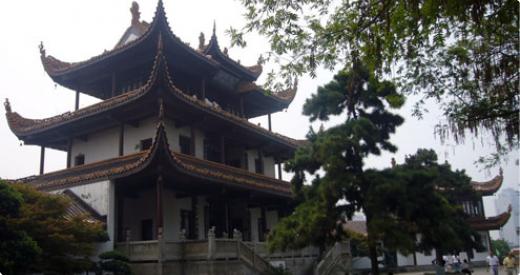
Population 2.2 million
Cuisine Xiang River cuisine, with influences from Tujia, Miao, Hui, Manchu and Dong ethnic Chinese groups incorporating smoked meats and preserved vegetables into local fresh ingredients
Signature Dishes Chairman Mao’s Red Braised Pork (braised pork belly in sugar and soya sauce), Pungent Tofu (臭豆腐), Dong’an Chicken (stir-fried chicken with chillis), Hunan Double Pepper Fish Head (steamed fish heads stir-fried with red and green chillis)
Wine Culture Developing wine market with city looking to develop infrastructure and industry in 829.2 billion RMB investment plan though with no timeframe of completion has yet been given
Wine Duty Approximately 48%
The province of Hunan is known for producing leading revolutionaries and innovators throughout Chinese history. From Zhu Xi, the founding father of the Imperial Examinations, which allowed commoners to enter government, to Chairman Mao Zhedong, the leader and founder of the People’s Republic of China, Hunan has had a history of giving birth to extraordinary people and unforgettable cuisine.
Changsha was established more than 3,000 years ago, after the unification of China by the first emperor of the Qin dynasty in 331BC. Lying on the banks of the Xiang River, a tributary of the Yangtze River, and surrounded by the fertile Hunan plains, the city is home to many different ethnic Chinese groups, including Tujia, Miao, Hui, Dong.
For much of its ancient history, Changsha is a city that despite its unstable history, has grown to adapt to the changes of the modern era. With the Treaty of Shanghai in 1903 opening up the city to foreign trade, educational institutions, houses, churches and factories soon sprung up, making it one of China’s 20 most economically advanced cities. The city boasts the top GDP in Hunan Province and the Wall Street Journal reported that the city’s municipal government plans to develop its infrastructure and industry in 195 investment areas with a budget in RMB billions including the second phase of Changsha’s Huanghua airport.
The mixed ethnic influences can be seen in the cuisine – the preserved vegetables as well as in the sour and spicy flavours from the Miao tribe found in the popular Hunan hot and sour soup, often served at the beginning of the meal. The practice of smoking and salting pork, lamb and beef by the Tujia and Dong tribes contribute to iconic Hunan dishes, such as Dong salted fish; a whole fish is marinated in a mixture of salt, ground chilli pepper, ginger, garlic and rice wine, then left to dry, turning the meat red with a deliciously sour, salty and spicy aroma. The Hui tribe, on the other hand, reflects the Hunan love of fresh ingredients; Hui fish soup, often a common family dish, features an extremely fresh river carp boiled with tamarind and cayenne pepper until soft, then mixed with tomato, celery together with coconut and peanut oil to create a light savoury soup.
Hunan cuisine is considered one of the Eight Great Cuisines of China, but can be split into three categories via region. Changsha, its capital city, is home to the Xiang River cuisine, known for having “dry spice” (干辣), as opposed to the more famous Sichuan “numbing spice” (麻辣). Dishes are characterised the liberal use of fresh chillis, as opposed to the Sichuan dried peppercorns, and the use of dou ban jiang (chilli black bean sauce), fresh ingredients and liberal use of oil. Hunan cuisine is also salty, using smoked and cured meats and vegetables. This gives local dishes a distinctive savoury heat, fresh aromas and rich colour. As the famous Chinese saying goes, “贵州人不怕辣,四川人辣不怕,湖南人怕不辣”- Guizhou people like spiciness, Sichuan people don’t fear spiciness, Hunan people fear the lack of spiciness.”
Whether to take the chance to retrace Chairman Mao’s footsteps on Orange Isle, where he allegedly spent his youth, or to sample some of the fiery Hunanese cooking, Changsha is a city for those escaping the skyscrapers and brand name shops of their more famous cousins.









